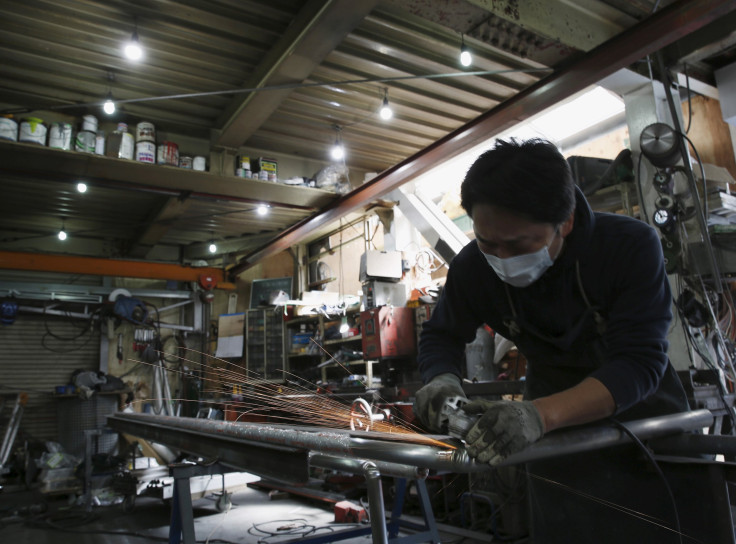Japan Factory Output Unexpectedly Rises, Economy Still In Low Gear

Japan's factory output unexpectedly rose in April as a series of earthquakes in the southern part of the country appeared to have had minimal impact on production, offering some signs of hope for an economy squeezed by weak exports and consumption.
Household spending also fell less than expected in April and job availability hit a 24-year high, a relief for Prime Minister Shinzo Abe who is expected to delay a scheduled sales tax hike next year to avoid dealing a hammer blow to a fragile economic recovery.
"The effect on output from the earthquakes may linger and inventory levels remain high. But the chance Japan can avert a big slump in second-quarter GDP has risen," said Harumi Taguchi, principal economist at IHS Global Insight.
Factory output rose 0.3 percent in April from the previous month, confounding market forecasts for a 1.5 percent drop and following a 3.8 percent gain in March, data by the Ministry of Economy, Trade and Industry showed on Tuesday.
The better-than-expected data triggered a brief rebound in the yen that pushed the dollar off its one-month high against the Japanese currency.
Manufacturers surveyed by the ministry expect output to rise 2.2 percent in May and increase 0.3 percent in June, suggesting that industrial production has bottomed out.
Japanese policy makers have been fighting a battle to fire up the world's third-largest economy, but massive fiscal and monetary stimulus over the past three years have failed to stoke sustainable growth or inflation.
Signs of hope
The earthquakes in Kumamoto, southern Japan, hit only a small portion of auto output with other sectors left largely unaffected. Machinery equipment output rose in a sign of pick-up in capital expenditure, the data showed.
But some analysts warn of lingering external headwinds such as sluggish emerging market demand that is expected to keep any rebound in economic activity modest at best.
"We can be relieved somewhat about the effects of the Kumamoto earthquakes. On the other hand, output has been weak due to global economic situations. That part hasn't changed much," said Hidenobu Tokuda, senior economist at Mizuho Research Institute.
"There are some positive moves (in the global market), but emerging markets are still slowing down and weakness remains in U.S. production, too."
In a glimmer of hope, separate data showed household spending fell 0.4 percent in April from a year earlier, much less than a 1.4 percent decline projected by analysts.
Japan's jobless rate was steady at 3.2 percent in April and the jobs-applicants ratio rose to 1.34, the highest level since November 1991, data showed on Tuesday.
Japan's economy narrowly averted recession in the first three months of this year and analysts expect only a modest rebound in the current quarter as sluggish global demand and tame wage growth weigh on exports and consumption.
Abe, well aware of the risks, has told ruling party officials that he plans to postpone next year's sales tax hike to ensure Japan plays its part to fend off risks of a global economic downturn.
© Copyright Thomson Reuters {{Year}}. All rights reserved.





















